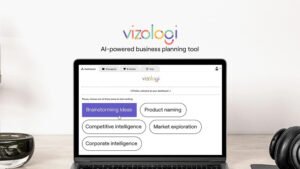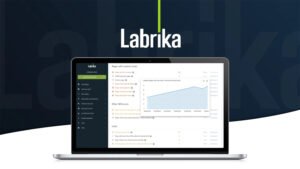Visitor Tracking is a powerful tool designed to provide website owners with valuable insights into their site traffic. By monitoring and analyzing visitor behavior, this tool offers the ability to understand your audience better and optimize your website for increased engagement and conversions.
In this article, we’ll dive into the key features, pricing, pros and cons, use cases, and more to help you determine if Visitor Tracking is the right fit for your website.
What is Visitor Tracking?
Visitor Tracking refers to the practice of monitoring and recording the actions of users on a website.
This tool helps website owners gain insights into visitor behavior, such as the pages they visit, how long they stay, and their interaction with specific content. By tracking these metrics, you can make data-driven decisions to improve user experience and boost engagement.
Visitor tracking is particularly valuable for improving website performance. It allows users to identify traffic patterns, uncover areas that need optimization, and better understand the effectiveness of marketing efforts.
Whether you’re running a business or a personal blog, knowing how visitors engage with your site is crucial to improving overall user experience.
Demo Video
Dashboard Overview Images



Key Features of Visitor Tracking
1. Real-Time Visitor Tracking
Monitor your website visitors as they interact with your site in real-time. This feature allows you to see live activity and user behavior, enabling immediate adjustments to improve site performance.
2. Visitor Behavior Analytics
Gain valuable insights into how visitors engage with your content. Track page visits, clicks, scroll depth, and more to better understand user preferences and optimize your content accordingly.
3. Geographic Visitor Data
View where your visitors are coming from, helping you target specific geographic locations for marketing campaigns or regional adjustments to your content strategy.
4. Traffic Source Analysis
Discover how visitors are finding your website, whether through organic search, social media, referral links, or paid ads. This data helps you assess the effectiveness of your marketing efforts.
5. Session Replay
Watch replays of your visitors’ sessions to understand how they navigate your website. This tool allows you to identify friction points and areas of improvement in the user journey.
6. Customizable Reports
Create custom reports to analyze specific data points that matter most to you. Whether you’re tracking conversions or exit rates, you can build reports that align with your goals.
7. Heatmaps
Visualize the most engaging parts of your website with heatmaps. These show you where users are clicking, scrolling, and spending the most time, allowing you to optimize for higher engagement.
8. Conversion Tracking
Track user conversions, whether it’s a product purchase, form submission, or newsletter signup. This feature provides clear insights into how well your site is converting visitors into leads or customers.
9. Event Tracking
Track specific user actions like button clicks, video plays, or downloads. Event tracking lets you analyze interactions that go beyond basic page views, offering deeper insights into user engagement.
10. Automated Alerts
Set up alerts for key events or behavior patterns that matter to you. Whether it’s a sudden spike in traffic or a drop in conversion rates, automated alerts help you stay on top of important changes.
Pros and Cons of Visitor Tracking
Pros:
Real-Time Analytics: Monitor and analyze visitor behavior as it happens, enabling quick decision-making.
Detailed Insights: Provides in-depth data on visitor actions, helping you optimize your website’s user experience.
Customizable Reports: Tailor your reports to track the metrics that matter most to your business goals.
Session Replays: Watch how visitors interact with your site to identify usability issues.
Geographic Tracking: Understand where your visitors are coming from to better target your marketing efforts.
Cons:
Learning Curve: For beginners, understanding the full range of features may take some time.
Data Overload: The amount of data available can be overwhelming for users who are new to analytics.
No Free Plan: Unlike some competitors, Visitor Tracking does not offer a free tier, which may deter budget-conscious users.
Limited Integrations: May not integrate seamlessly with all third-party platforms.
Requires Continuous Monitoring: While it provides real-time data, users need to actively monitor and analyze the information to make informed decisions.
Use Cases of Visitor Tracking
1. E-commerce Websites
For online stores, Visitor Tracking can help monitor shopper behavior, track abandoned carts, and optimize product pages for increased conversions.
2. Content Websites
Content creators and bloggers can use Visitor Tracking to understand what topics resonate with their audience, leading to better content strategies and more engagement.
3. Lead Generation Websites
Businesses focused on generating leads can use the platform to track how users interact with lead forms, which helps optimize them for higher submission rates.
4. SaaS Platforms
Software-as-a-Service businesses can gain valuable insights into how users are engaging with the platform, enabling them to optimize the onboarding process and user retention.
5. Event Websites
For event organizers, Visitor Tracking allows you to understand how visitors interact with event pages, helping you refine event marketing strategies and registration flows.
6. Educational Websites
Educational platforms can monitor how students interact with learning materials, ensuring the content is engaging and that students are completing courses.
7. Non-profit Organizations
Non-profits can track visitor behavior to improve donor engagement and tailor their campaigns for maximum impact.
Deal Terms & Conditions of Visitor Tracking
- One-time payment of $69 for full access to Visitor Tracking.
- Lifetime access to all features and future updates.
- 60-day money-back guarantee if you’re not satisfied with the product.
- Access to premium support for the duration of the deal.
- This deal is available for a limited time only.
- Offer cannot be combined with other discounts or deals.
- User must create an account to access the full features.
- Some features may require additional configuration or setup.
- The product can be used for one website, with the option to purchase additional licenses.
- The license is non-transferable and intended for use by the original purchaser.
Pricing
One-Time Payment of $69
This covers all core features and lifetime access to the tool.
Single Website License
The price covers one website; additional licenses are available for purchase.
No Monthly Fees
There are no recurring costs once you make the payment.
Premium Support Included
Access to priority support is included in the package.
Future Updates
All future updates and new features will be included at no extra cost.
30-Day Money-Back Guarantee
A full refund is available if you’re not satisfied within the first 30 days.
Additional License
You can purchase additional licenses for other websites at a discounted rate.
Custom Integrations
Some advanced features may require additional integrations, which could be at extra cost.
Access to All Features
The $69 fee includes full access to the software’s key features and tools.
Limited Time Offer
This pricing deal is only available for a short period, so act quickly to secure the offer.
From The Founders
The founders of Visitor Tracking have designed the tool to provide website owners with a robust analytics platform that goes beyond basic visitor counts. Their goal is to empower users to understand their audience on a deeper level, optimizing website performance and conversions.
With a focus on simplicity and real-time data, the founders believe that every website, regardless of its size, can benefit from detailed insights into user behavior.
FAQs About Visitor Tracking
1. How does Visitor Tracking help with website optimization?
Visitor Tracking helps optimize your website by providing real-time insights into user behavior. You can identify popular pages, areas with high bounce rates, and which parts of your site users engage with most. This data allows you to make informed decisions on where to improve user experience and boost conversions.
2. Can I track specific user actions with Visitor Tracking?
Yes, Visitor Tracking allows you to track specific actions such as button clicks, form submissions, video views, and more. This helps you analyze key interactions on your site, providing valuable data for optimizing your site’s user journey.
3. Is Visitor Tracking easy to set up?
Yes, Visitor Tracking is user-friendly and easy to set up. Once you install the tracking script on your site, you can start monitoring visitors in real-time. The dashboard is intuitive and provides all the data in an easily accessible format.
4. Can I use Visitor Tracking for multiple websites?
While the basic plan is for a single website, you can purchase additional licenses to use Visitor Tracking across multiple websites. Each website will have its own separate tracking and data reporting.
5. Does Visitor Tracking support mobile tracking?
Yes, Visitor Tracking works seamlessly across both desktop and mobile platforms, allowing you to track visitors regardless of the device they are using. This is particularly useful for sites with significant mobile traffic.
6. What kind of reports can I generate with Visitor Tracking?
You can generate a variety of reports, including traffic source analysis, session replays, conversion rates, visitor behavior, and heatmaps. Reports are customizable based on your tracking needs, helping you focus on the most relevant data.
7. How accurate is the visitor data?
Visitor Tracking provides highly accurate data with real-time tracking and detailed insights. However, like all tracking tools, data accuracy can sometimes be impacted by factors like ad-blockers or users disabling cookies. Despite this, the tool still provides valuable insights for the vast majority of visitors.
8. Do I need technical skills to use Visitor Tracking?
No, Visitor Tracking is designed to be easy for non-technical users to navigate. The setup process is simple, and the dashboard provides all necessary data without requiring coding or advanced technical knowledge.
9. Is Visitor Tracking GDPR-compliant?
Yes, Visitor Tracking is designed to comply with GDPR and other privacy regulations. It provides features that allow you to manage and control the data collected from visitors, ensuring compliance with privacy laws.
10. Can I integrate Visitor Tracking with other tools?
Visitor Tracking offers integrations with some popular tools and platforms, including Google Analytics and marketing automation software. These integrations allow you to extend the functionality and power of Visitor Tracking to create a more comprehensive analytics ecosystem.
See What Customers Are Saying



Explore Our Pages: WP Themes, WP Plugins






